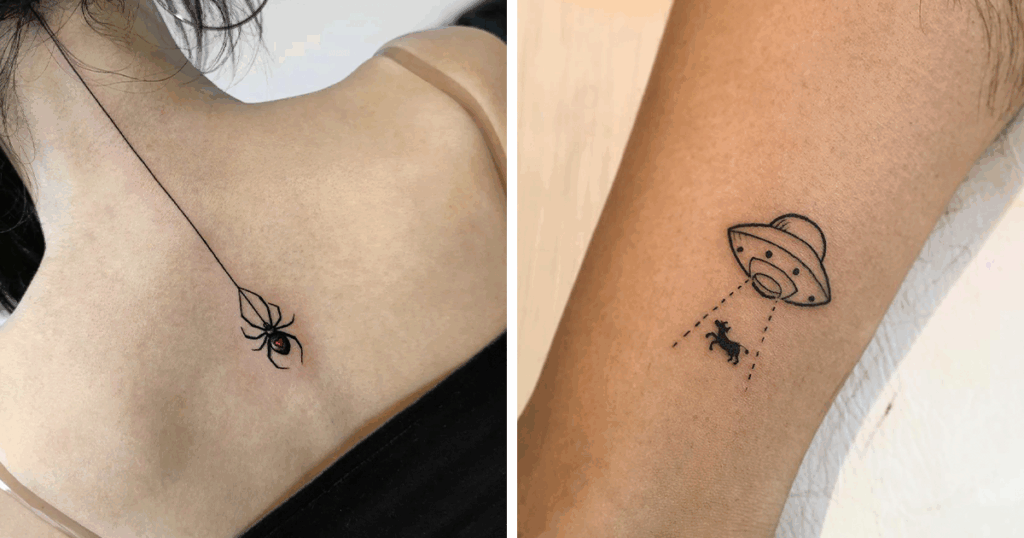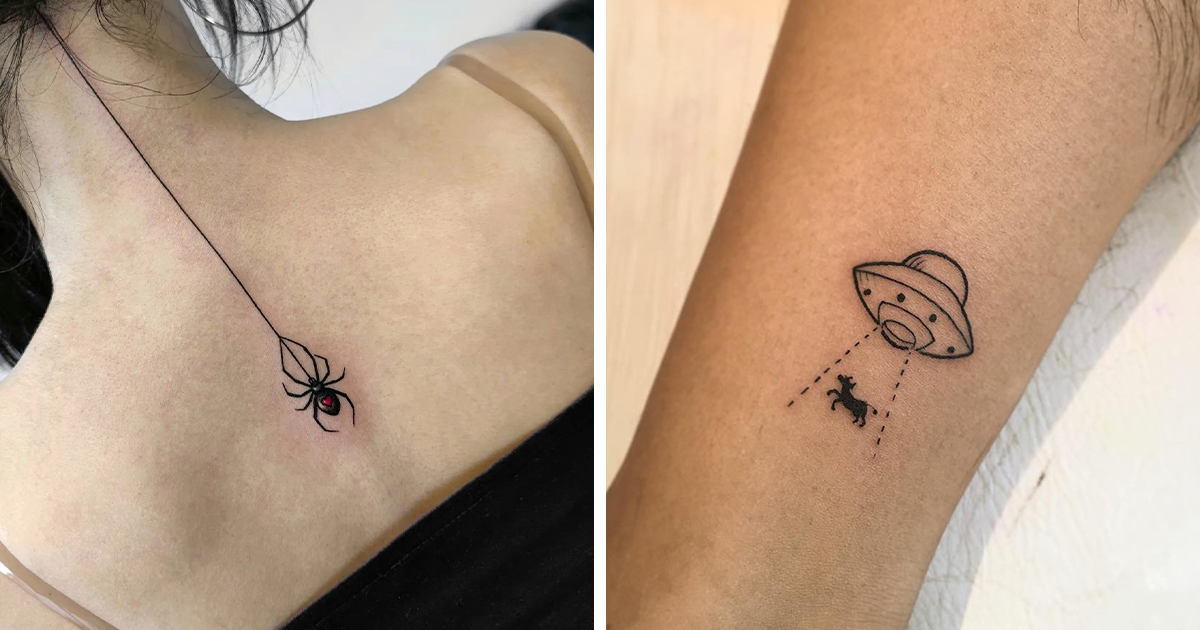
Small Tattoo Places: Finding the Perfect Spot for Your Tiny Ink
The allure of tattoos, even small ones, is undeniable. They’re a form of self-expression, a permanent reminder of a moment, a person, or a belief. But where do you go to get that perfect piece of tiny ink? Finding the right artist and studio, especially for small tattoo places, is crucial to ensure a positive and safe experience. This article explores what to look for when choosing a studio specializing in small tattoos, how to prepare for your appointment, and what to expect during the process.
Why Choose a Studio Specializing in Small Tattoos?
While many tattoo studios offer a wide range of services, studios that focus on or have significant experience with small tattoos often provide a more tailored and refined experience. Here’s why:
- Precision and Detail: Small tattoos require exceptional precision and attention to detail. Artists specializing in this area possess the steady hand and expertise to create clean, crisp lines, ensuring the design remains legible and visually appealing over time.
- Specialized Equipment: Some small tattoo places use specialized equipment, such as finer needles and precision machines, specifically designed for intricate work. This can make a significant difference in the final outcome.
- Experience with Fine Lines: Experienced artists understand how ink spreads over time. They can account for this when designing and applying the tattoo, preventing blurring and ensuring the design remains sharp.
- Consultation and Design Expertise: Studios specializing in small tattoos often have artists who are skilled at helping clients refine their designs. They can offer advice on sizing, placement, and color choices to ensure the tattoo looks its best.
Factors to Consider When Choosing Small Tattoo Places
Finding the right small tattoo places involves careful consideration. Here are some key factors to keep in mind:
Hygiene and Safety Standards
This is paramount. Ensure the studio adheres to strict hygiene and safety standards. Look for the following:
- Sterilization Procedures: The studio should use an autoclave to sterilize all reusable equipment. Needles should always be single-use and disposed of properly in a sharps container.
- Cleanliness: The studio should be clean and well-maintained. Workstations should be thoroughly disinfected between clients.
- Licensing and Certification: Verify that the studio and its artists are licensed and certified by the relevant health authorities. This ensures they meet minimum safety and training requirements.
Artist Portfolio and Style
Review the artist’s portfolio to assess their skill and style. Pay close attention to examples of their small tattoo work. Consider the following:
- Line Work: Are the lines clean, crisp, and consistent?
- Detail: Is the detail well-executed and legible?
- Overall Aesthetic: Does the artist’s style align with your vision for your tattoo?
Studio Reputation and Reviews
Check online reviews and testimonials to gauge the studio’s reputation. Pay attention to comments about the artist’s skill, the studio’s cleanliness, and the overall customer experience. Look for reviews on Google, Yelp, and other review platforms. [See also: Tattoo Studio Review Websites]
Consultation and Communication
A good studio will offer a consultation to discuss your design ideas, answer your questions, and address any concerns. The artist should be willing to collaborate with you to create a tattoo that meets your expectations. Clear and open communication is essential throughout the entire process.
Pricing and Value
While price shouldn’t be the only factor, it’s important to consider the cost of the tattoo. Get quotes from several studios and compare their pricing. Be wary of studios that offer significantly lower prices than others, as this may indicate compromised quality or safety standards. Remember, you’re paying for the artist’s skill, experience, and the studio’s commitment to hygiene and safety. Also, inquire about the studio’s touch-up policy in case your small tattoo needs some corrections. [See also: Tattoo Pricing Guide]
Preparing for Your Small Tattoo Appointment
Proper preparation can help ensure a smooth and comfortable experience.
Choose the Right Design and Placement
Consider the size, complexity, and placement of your tattoo carefully. Small tattoos are best suited for simple designs with clean lines. Choose a location that will accommodate the size of the tattoo and that you’re comfortable with. Think about how the tattoo will look as you age and how it will be affected by weight fluctuations.
Avoid Alcohol and Blood Thinners
Avoid alcohol and blood thinners (such as aspirin or ibuprofen) for at least 24 hours before your appointment. These substances can increase bleeding and make it more difficult for the artist to apply the tattoo.
Stay Hydrated and Eat a Good Meal
Staying hydrated and eating a good meal before your appointment can help prevent dizziness and fainting. Low blood sugar can make you feel lightheaded, so it’s important to have a full stomach.
Wear Comfortable Clothing
Wear comfortable clothing that allows easy access to the area being tattooed. If the tattoo is on your arm, wear a sleeveless shirt. If it’s on your leg, wear shorts or loose-fitting pants.
Bring a Reference Image
If you have a specific design in mind, bring a reference image to your appointment. This will help the artist understand your vision and create a tattoo that meets your expectations.
The Small Tattoo Process
Understanding the process can help alleviate any anxiety you may have.
Consultation and Design Refinement
The artist will review your design and discuss any necessary refinements. They may also create a stencil of the design to ensure proper placement.
Skin Preparation
The artist will clean and shave the area to be tattooed. They may also apply a stencil to guide the tattooing process.
Tattoo Application
The artist will use a tattoo machine to apply the ink to your skin. The process typically involves outlining the design first, followed by shading and filling in any colors. While small tattoos are relatively quick, the artist’s focus on detail and precision is paramount.
Aftercare Instructions
The artist will provide you with detailed aftercare instructions. It’s crucial to follow these instructions carefully to prevent infection and ensure proper healing. This typically involves keeping the area clean and moisturized. [See also: Tattoo Aftercare Tips]
Common Small Tattoo Ideas
The possibilities for small tattoos are endless, but here are a few popular ideas:
- Symbols: Hearts, stars, infinity symbols, and other simple symbols are popular choices.
- Letters and Initials: Initials of loved ones or meaningful words can be a subtle and personal touch.
- Animals: Small animal silhouettes or paw prints are a cute and meaningful option.
- Floral Designs: Tiny flowers or leaves can add a touch of elegance and beauty.
- Geometric Shapes: Simple geometric shapes can be a modern and minimalist choice.
Conclusion
Getting a small tattoo can be a rewarding experience. By choosing a reputable studio specializing in small tattoo places, preparing properly for your appointment, and following aftercare instructions carefully, you can ensure a beautiful and long-lasting piece of art. Take your time, research your options, and find an artist whose style and expertise align with your vision. With the right preparation and guidance, you can confidently embark on your journey to acquire that perfect piece of tiny ink.

